I first learned about this event some months ago … not by searching the remote corners of the internet (Running In The USA is one such corner) but from Patricia Gropp during the Women in HPC networking event as part of the SC18 festivities in Dallas, TX. I had put it on the back-burner of bucket list items … things for which I’d eventually make time. But during the Coalition for Academic Scientific Computation (CASC) Spring 2019 meeting in Alexandria, VA, the event re-surfaced again … thanks to a post-dinner conversation with David Moses and John Towns. Once John re-explained the festive small town America atmosphere associated with the big Illinois Marathon event that runs in the shadows of the famed National Center for Supercomputing Applications (NCSA), the event moved to the front-burner and I signed up.
Most well-written marathon training plans accommodate/suggest a half marathon race at target pace (i.e., planned marathon race pace) about two-thirds of the way through. I happened be following one such plan (Hal Higdon‘s 18-week Advanced 2 Program) and my good fortune was that the Illinois Marathon weekend coincides with the end of week #12! Only difference was that I chose to do a full marathon … though not at target pace for the entirety of distance. It might sound silly/childish (or over-doing it) but if I was going to drive 11 ish hours each way, then I wanted to run at least a mile for every hour that I drove. A few days before the event, I signed up for the Friday 5k as well to mimic the easy jog the day before. And when the travel component was taken into account, this’d be a complete dress rehearsal for the planned event 6 weeks down the road.
Driving to the Prairie State
Thanks to the students in my UN5390: Scientific Computing course doing a good job preparing for and executing their final research marketing activity, I was able to hit the road in good spirit on Thursday. Expecting that they’d do well, I had packed the car the night before and had planned on leaving from campus shortly after the class. The journey was broken up into shorter segments and helped take care of some unfinished tasks in America’s Dairyland.
Though one of the primary tasks remained unfinished, breaking up the journey helped minimize the amount of time I spent continuously in the car. This, in turn, potentially kept the car legs syndrome at bay and focus better on the road. Scott Jurek‘s Eat & Run as well as Bill McKibben‘s Long Distance, through not for the first time, kept me company throughout this drive highlighted by a pit stop to see a Pink Elephant!
Once I got to Urbana-Champaign area on Friday, finding a parking spot on a busy afternoon was by far the most difficult part. But the friendliness of the event organizers and volunteers easily made up for it. Folks at The Solutions Desk helped merge my Friday 5k and Saturday Marathon registrations into the Full I-Challenge. Walking through the expo, I had the privilege of meeting (and chatting and hugging) Craig Virgin, a 9-time All American, 9-time BIG10 conference champion, 3-time Olympian, a 2-time World Cross Country champion and a 1-time NCAA National Cross Country Champion (he has plenty more accolades … far too many to list here). Finding a quick bite to eat (it served the purpose of putting some food in my belly but its source isn’t some place I’d venture again), checking into the AirBnB accommodation and exploring the course to the extent possible were a breeze as well.
|
Goal vs Reality
Goal: 3.11 mi in 0:30:00 (9:38 min/mi) Reality: 3.11 mi in 0:28:07.0 (9:02 min/mi) |
|||||||
| Distance mi |
Lap Time m:ss |
Lap Elevation feet |
Total Time h:mm:ss |
Total Elevation feet |
Avg Pace min/mile |
Projected Finish Time h:mm:ss |
Differential Goal Time h:mm:ss |
| 1.00 | 9:50 | 7↑ 16↓ | 0:09:50 | 7↑ 16↓ | 9:49 | 0:30:31 | 0:00:31 |
| 2.00 | 9:00 | 10↑ 7↓ | 0:18:50 | 17↑ 23↓ | 9:24 | 0:29:13 | 0:00:47 |
| 3.00 | 8:30 | 10↑ 10↓ | 0:27:20 | 27↑ 33↓ | 9:06 | 0:28:18 | 0:01:42 |
| 3.11 | 0:54 | 3↑ 3↓ | 0:28:14 | 30↑ 36↓ | 9:04 | 0:28:12 | 0:01:48 |
| The final cumulative time, 0:28:14, may not match the official time (0:28:07.0) owing to rounding errors. Starting my watch a few seconds before the start and stopping it a few seconds after crossing the finish line can be an additional reason for this discrepancy. The overall distance, 3.11 mi, may not match the designated (or certified) event distance (3.11 mi) owing to idiosyncrasies associated with GPS data collection OR my inability to take the tangents OR the aforementioned early start/late stop reasons, and in some rare cases, incorrectly measured (or advertised) courses or DNFs. As a result, the cumulative pace and the projected finish time might not match the official values as well. | |||||||
In light of road closures, finding place to park that’d make it easier to leave afterwards proved not so easy. So was making my way to the start area and standing around exposed to the winds for nearly an hour. The event started after a beautiful rendition of The Star Spangled Banner. I started in Wave B (allocated based on my expected finish time) and right off the bat, I noticed the heart rate being a bit higher than normal and breathing a bit ragged. It had been nearly 5 months since I toed the start line of a running race and I chalked it up to race day jitters even though I wasn’t racing this 5k.
With each passing mile, the winds felt like gentle breeze and the crowd support for the entirety of the course made it a joyous experience. While maintaining decent turnover and what felt like easy effort, I did pick up the pace (9:50, 8:59, 8:29 and 7:51 min/mile). The run ended near the 50 yard line of the famed Memorial Stadium – where the Fighting Illini play football. My official finish time was 0:28:07 – good enough for 852/4824 overall, 582/1890 in gender and 41/167 in AG. It took me a short while afterwards to walk back to the car, find a good place to get some food and navigate my way to that good place around road closures. The food was good and so was the service at Maize at the Station. Dinner was significantly late (~9 pm) per my routine (~6-6:30 pm) but I didn’t think much of it and called it a night by 10 pm.
The day
Although I woke up a few minutes before 5:00 am alarm on my own and fairly rested, the first hour of Saturday morning felt a bit hurried. Jes, my AirBnB hostess, had kindly offered to drive me to the starting area saving me the trouble of getting to the start line and the complexities that come with it when the roads are closed. I made some good coffee but left for the race without drinking any of it. Fortunately, the predicted rain held off and it was near-perfect weather for running.
Having arrived at the start area about an hour before the scheduled start, I found Abraham Lincoln, Jan Seeley (the race director), coffee (and one half of a bagel, courtesy of the event organizers and sponsors), Dr. Richard Magin (a veteran of Run The Keweenaw), Jeana, and a couple of first-time marathoners (being an experienced marathoner now, I felt it’s my duty to share everything I knew about anything they wanted to know and pay at least some of it forward) near the starting area. The event started after yet another beautiful rendition of The Star Spangled Banner.
I started in Wave A (upgraded from Wave B after chatting with Khris, pacer for 3:15 group yesterday at the expo; henceforth referred to as Coach Khris) but at the very end of the corral. Sensing some humidity, I opted focus my energy on keeping the effort as even as possible and maintain good posture, cadence and breathing. I did pick up the pace whenever the course permitted and consumed gel every 3rd mile (and water at every aid station). The course snaked through the cities of Urbana and Champaign … mostly through well-supported neighborhoods and sometimes through lovely parks and fields.
Through the first 10 miles, I noticed that my breathing was fairly even, cadence was hovering around 170 spm and I was running tall and easy. About halfway into mile #11, I stopped for the first time ever in any of the organized races to use the rest room. I didn’t have much difficulty retaining the pace once I resumed running afterwards. The spectator support, I noticed, was a bit thin for the second half and the previous practice of loneliness of the long distance runs came in quite handy to keep moving with mostly intrinsic motivation.
I fought off the urge to use the portable restroom around mile #14 again but it was a mistake in hindsight. I kept looking for the next available portable restroom for the next 3 miles and my pace dropped about 15-30 seconds per mile. I finally stopped shortly into mile #18 to use the facilities. Picking up the pace after resuming the run didn’t seem difficult but I had slowed down by mile #20. In spite of repeated efforts, I couldn’t pick up the pace during miles #21 through #23. Having run a 26+ and 27+ mile LSD runs over the past two weekends in a row and maintaining a higher cadence (around 170 spm), I figured it was just fatigue and certainly not the case of my body doesn’t know what to do this far into the run (or running into the wall).
|
Goal vs Reality
Goal: 26.22 mi in 3:40:04 (8:23 min/mi) Reality: 26.07 mi in 3:35:46.0 (8:16 min/mi) |
|||||||
| Distance mi |
Lap Time m:ss |
Lap Elevation feet |
Total Time h:mm:ss |
Total Elevation feet |
Avg Pace min/mile |
Projected Finish Time h:mm:ss |
Differential Goal Time h:mm:ss |
| 1.00 | 8:34 | 3↑ 13↓ | 0:08:34 | 3↑ 13↓ | 8:34 | 3:44:37 | 0:04:33 |
| 2.00 | 7:59 | 7↑ 10↓ | 0:16:33 | 10↑ 23↓ | 8:16 | 3:36:45 | 0:03:19 |
| 3.00 | 7:53 | 16↑ 20↓ | 0:24:26 | 26↑ 43↓ | 8:08 | 3:33:15 | 0:06:49 |
| 4.00 | 7:54 | 30↑ 7↓ | 0:32:20 | 56↑ 50↓ | 8:04 | 3:31:30 | 0:08:34 |
| 5.00 | 7:51 | 7↑ 36↓ | 0:40:11 | 63↑ 86↓ | 8:02 | 3:30:37 | 0:09:27 |
| 6.00 | 8:03 | 16↑ 33↓ | 0:48:14 | 79↑ 119↓ | 8:02 | 3:30:37 | 0:09:27 |
| 7.00 | 8:04 | 46↑ 13↓ | 0:56:18 | 125↑ 132↓ | 8:02 | 3:30:37 | 0:09:27 |
| 8.00 | 7:49 | 3↑ 23↓ | 1:04:07 | 128↑ 155↓ | 8:00 | 3:29:45 | 0:10:19 |
| 9.00 | 8:04 | 26↑ 26↓ | 1:12:11 | 154↑ 181↓ | 8:01 | 3:30:12 | 0:09:52 |
| 10.00 | 8:05 | 33↑ 13↓ | 1:20:16 | 187↑ 194↓ | 8:01 | 3:30:12 | 0:09:52 |
| 11.00 | 8:06 | 3↑ 13↓ | 1:28:22 | 190↑ 207↓ | 8:02 | 3:30:37 | 0:09:27 |
| 12.00 | 8:35 | 20↑ 0↓ | 1:36:57 | 210↑ 207↓ | 8:04 | 3:31:30 | 0:08:34 |
| 13.00 | 7:53 | 7↑ 30↓ | 1:44:50 | 217↑ 237↓ | 8:03 | 3:31:04 | 0:09:00 |
| 14.00 | 7:47 | 39↑ 7↓ | 1:52:37 | 256↑ 244↓ | 8:02 | 3:30:37 | 0:09:27 |
| 15.00 | 8:03 | 16↑ 0↓ | 2:00:40 | 272↑ 244↓ | 8:02 | 3:30:37 | 0:09:27 |
| 16.00 | 8:20 | 30↑ 16↓ | 2:09:00 | 302↑ 260↓ | 8:03 | 3:31:04 | 0:09:00 |
| 17.00 | 8:36 | 23↑ 36↓ | 2:17:36 | 325↑ 296↓ | 8:05 | 3:31:57 | 0:08:07 |
| 18.00 | 10:06 | 3↑ 30↓ | 2:27:42 | 328↑ 326↓ | 8:12 | 3:35:00 | 0:05:04 |
| 19.00 | 8:06 | 3↑ 7↓ | 2:35:48 | 331↑ 333↓ | 8:12 | 3:35:00 | 0:05:04 |
| 20.00 | 8:06 | 7↑ 7↓ | 2:43:54 | 338↑ 340↓ | 8:11 | 3:34:34 | 0:05:30 |
| 21.00 | 8:46 | 20↑ 3↓ | 2:52:40 | 358↑ 343↓ | 8:13 | 3:35:26 | 0:04:38 |
| 22.00 | 8:42 | 0↑ 10↓ | 3:01:22 | 358↑ 353↓ | 8:14 | 3:35:52 | 0:04:12 |
| 23.00 | 9:31 | 7↑ 0↓ | 3:10:53 | 365↑ 353↓ | 8:17 | 3:37:11 | 0:02:53 |
| 24.00 | 8:47 | 20↑ 3↓ | 3:19:40 | 385↑ 356↓ | 8:19 | 3:38:03 | 0:02:01 |
| 25.00 | 8:03 | 52↑ 30↓ | 3:27:43 | 437↑ 386↓ | 8:18 | 3:37:37 | 0:02:27 |
| 26.00 | 7:39 | 7↑ 39↓ | 3:35:22 | 444↑ 425↓ | 8:17 | 3:37:11 | 0:02:53 |
| 26.07 | 0:27 | 0↑ 7↓ | 3:35:49 | 444↑ 432↓ | 8:16 | 3:36:45 | 0:03:19 |
| The final cumulative time, 3:35:49, may not match the official time (3:35:46.0) owing to rounding errors. Starting my watch a few seconds before the start and stopping it a few seconds after crossing the finish line can be an additional reason for this discrepancy. The overall distance, 26.07 mi, may not match the designated (or certified) event distance (26.22 mi) owing to idiosyncrasies associated with GPS data collection OR my inability to take the tangents OR the aforementioned early start/late stop reasons, and in some rare cases, incorrectly measured (or advertised) courses or DNFs. As a result, the cumulative pace and the projected finish time might not match the official values as well. | |||||||
Just as I was accepting what seemed like sluggish pace, being unhappy about wasting a lovely prime number bib (autographed by Craig Virgin no less) and not doing my best on a tailor-made day for running, Mike (3:35 pace guide; henceforth referred to as Coach Mike) came along and encouraged me to pick up the pace a little. He seemed like a very knowledgeable runner and a very good teacher. Doing everything Coach Mike asked of me in blind faith over the last 3 miles and 385 yards (e.g., picking up the pace and engaging the core; keeping the head high as Shawn had taught me during a ski lesson; forcing myself to breath in through the nose as I had been doing in easy/long runs; and more) helped me finish strong (8:46, 8:02, 7:38 and 6:11 min/mile).
Finishing strong over the last 5-10k in a half (or a full) marathon is something that I’ve always wanted to do and had convinced myself, in recent times, that I could do. Apart from a few hundred meters near the very end on select previous occasions, I hadn’t done it but Coach Mike (and Shawn) helped get it out of me. Much like the night before, the finish line was at the 50 yard line of the famed Memorial Stadium. My official finish time was 3:35:46 – good enough for 255/1089 overall, 209/695 in gender and 27/81 in AG (and a new PR).
While contemplating the past ~3.50 hours after the finish line, I saw a young lady (#580) in tears in Memorial Stadium. Reading into her bib, 1st Full As Momma, I just had assumed that she was overcome with joy for having completed either her very first marathon or her first as a mother. Having developed a certain runner kinship as a result of following in her footsteps for a few miles in the second half, I approached her and asked if something was wrong. It was only after I chatted with her (and gave her a hug) that I realized she had missed qualifying for Boston by a narrow margin. She wasn’t new to Bean Town – she had done it once, missed the second time due to pregnancy and was hoping to earn one for her child. It was rather heartbreaking.
After thanking Coaches Khris and Mike (the pace guides) and bidding adieu to the latter, Coach Khris suggested that I get in line to get my body worked on by the kind professionals from Athletico Physical Therapy. Waiting nearly 45 minutes for my turn was certainly worth it. Aided by improvements in endurance, the overall recovery time (to walk normally, including up and down the stairs without a hitch) was about 60-90 minutes. After changing into warmer and rain-resistant clothes as well as grabbing post-race nutrition (banana, chips, pizza and mini servings of pasta; I dutifully skipped chips and pizza), I walked down to the field level of Memorial Stadium to take in the view, cheer on finishing runners and check on the first-time marathoners I had chatted with at the start.
The tiered goals (listed in order of preference) I had for event were to
- run the length of the course with a relatively slow start and a stronger finish,
- employ the pacing and racing strategies Ray had taught me during last Sunday’s run (and then in an email), and
- reproduce (improve, if possible, upon) the result from 2018 Chicago Marathon – 3:40:05, 8:24 min/mile, 7.14 mph.
More so than achieving these goals, I was pretty proud of being quite mindful throughout the run. That is, focusing the relevant amount of energy in the mile I was in and not let the mind wander off to the side streets. Barring less than a handful occasions, I didn’t think too much about anything either. Apart from the conversations with Coach Mike and waving to John Towns (and his family around mile #23), the only other discussion I remember is the one I had with a young kid and talking him out of his plans to be a rogue runner in a big city marathon.
Jes, the kind AirBnB hostess, drove in pouring rain to pick me up and gave me recommendations for good food in the Urbana-Champaign area. A hearty and authentic meal in Huaraches led to a 2-hour nap. An hour of lovely conversations and yummy home-made walnut brownies with the Gropps led to a quality night of sleep.
The journey home
I woke up to an alarm around 4 am on Sunday to watch the 2019 edition of the Virgin Money London Marathon on my phone (thanks, Sling TV!). Sitting up straight (or bending over the first couple times) was a bit of struggle. The abs/core must have really been engaged over those last 3 miles and I was feeling some pain …. but a good kind of pain that hopefully symbolizes growth/improvement. I had/have come to learn quite a bit about Eliud Kipchoge but knew nothing about Brigid Kosgei. Roger Robinson’s poetic preview in Podium Runner – Kipchoge Returns to London: Another Marathon Masterclass? (excerpt below) – verbalized the feelings and expectations of many … but far better than I (or most others) could. All I could do was, like many others around the world, admire in awe what Brigid and Eliud did to their respective deep field of competitors. Needless to say, Eliud did not disappoint and did indeed put on a masterclass.
The preview of Sunday’s London Marathon men’s race can be written in one word: Kipchoge.
It is a measure of Eliud Kipchoge’s mastery that his name can sum up everything important about a major race. Kipchoge: The word means epoch-making excellence, it means a unique combination of record-breaking pace and tactical versatility, it means adaptability to conditions and competition, it means deep understanding of the science of training and the practice of racing, it means one of the most wise and intelligent men ever to be sports star, it means the world record, the Olympic gold medal, winning ten out of eleven major marathons, not coming close to defeat since 2013, and having a PR 1min 18sec faster than anyone else in history.
Most astonishing, it means never having failed at the marathon. Kipchoge’s only loss was in his second marathon, as runner-up to Wilson Kipsang’s world record, breaking his own PR by a minute in 2:04:05: hardly failure. In racing action and in conversation, Kipchoge makes you realize what the ancient Greeks meant by a demigod.
The drive back to the Yoop, though uneventful, took a scenic stopovers to spend some time with good friends: the Carpenters (Rachel, Nathan and their little ones) in Normal, IL; Chris in Davenport, IA; Jamie in Stevens Point, WI; Alyssa in Tomahawk, WI. Apart from a lovely meal and conversation, I learned something new and useful from them. The stopovers broke up an otherwise long drive and the shorter driving segments were made even shorter by listening to David Quammen’s The Tangled Tree, a book recommended by the Gropps.
The notable takeaway from this dress rehearsal of a race/run was stick with the routine. In other words,
- No driving (i.e., traveling) 24 hours before the start of the race.
- Wrap up the last easy jog 24 hours before the start of the race and save the energy rest of the day. I now know why John took me to Chicago 2 days before and why, after wrapping up the 2-mile easy run and picking up race packet early in the day, we just people watched in the hotel lobby.
- Eat the same things and around the same time the day before and the morning of the race as previously practiced.
However, if not for violating these takeaways, I likely would have not had to stop and use the facilities. In turn, I likely would have not lost the time/pace like I did leading up to mile #23. In turn, I likely would not have met Coach Mike along the way. In turn, I likely would have not learned to dig a little deeper and tap into the resources I had available within me to finish strong. Or in other words, I likely would have not had experienced the quote Scott Jurek opens the very first chapter in his Eat & Run.
Beyond the very extreme of fatigue and distress, we may find amounts of ease and power we never dreamed ourselves to own; sources of strength never taxed at all because we never push through the obstruction.
no images were found
Thanks be to
the rejections and opportunities life has brought my way, event folks (organizers, sponsors, volunteers, timers, law enforcement officials, photographers, fellow participants and spectators) and my family of good friends, mentors and coaches in and outside of my community for all the unexpected, undeserved and unrewarded acts of kindness and constant encouragement as well as offerings of constructive criticism to improve myself as a human and an athlete. I am eternally grateful to all those who let me train with them, who shared their meals and experiences with me, who helped keep me in good health, who helped me stay the course, and who cheered me on from home or along the course.

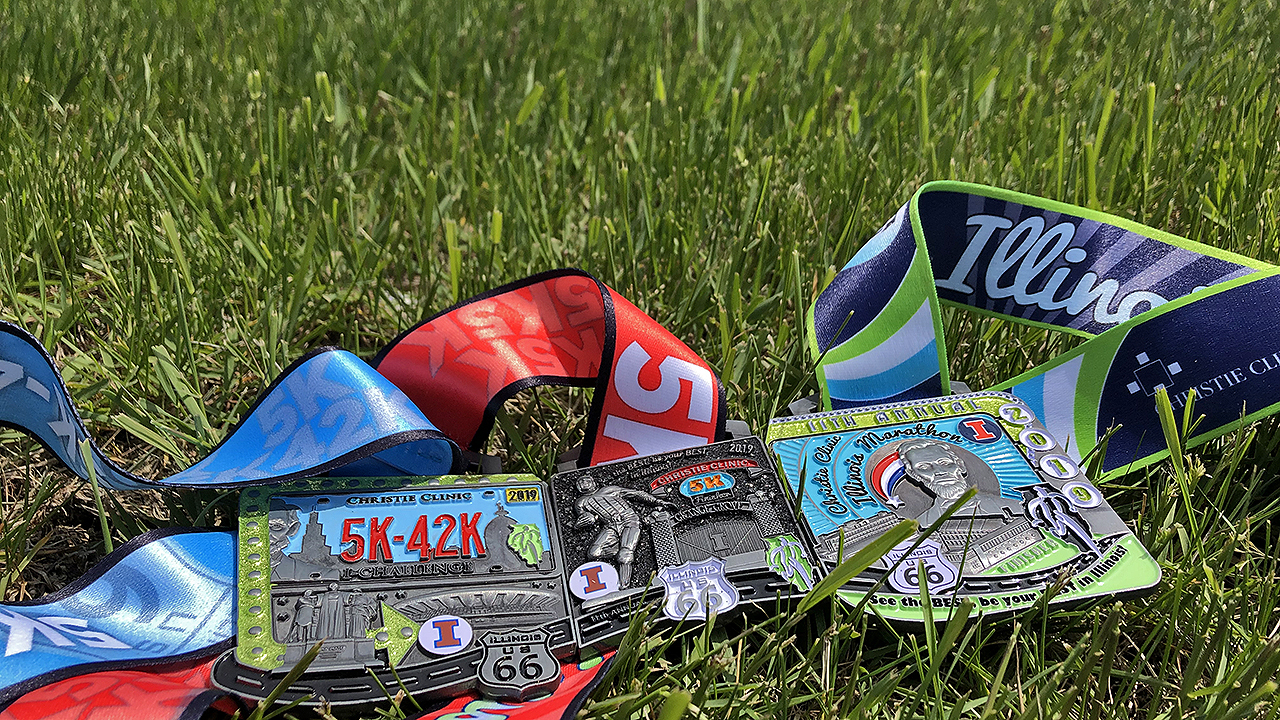
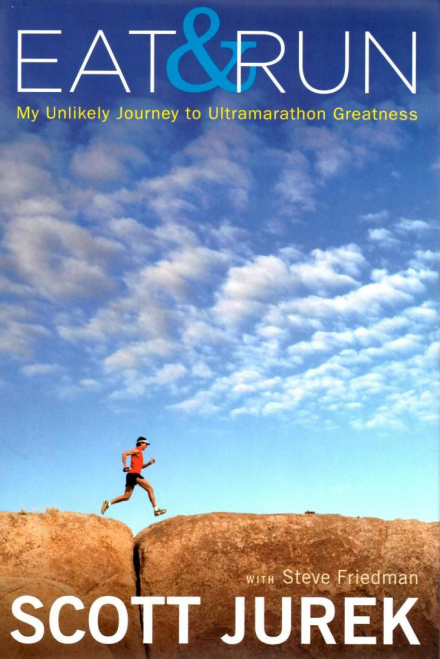

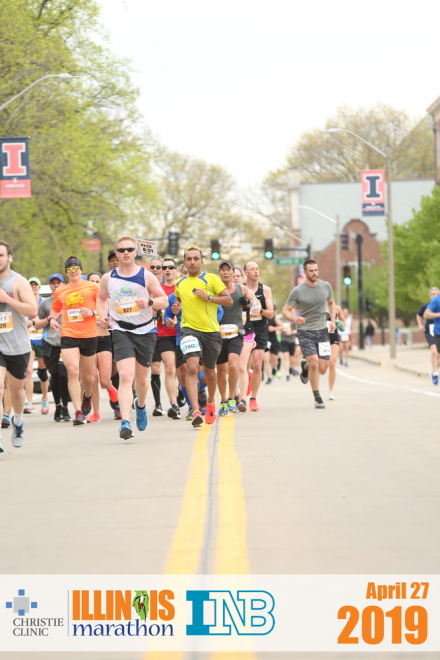
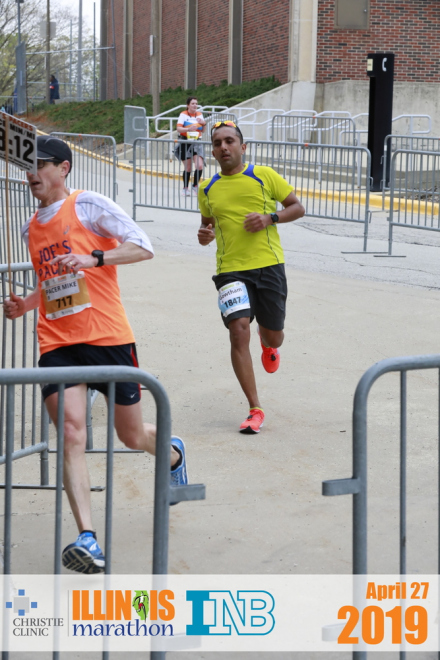
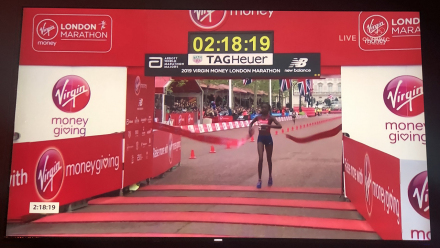
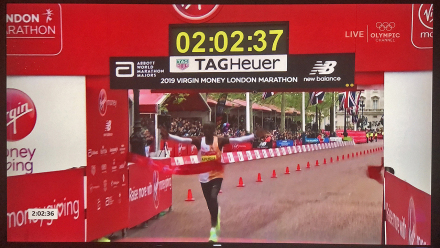
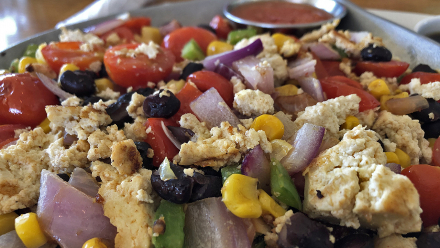
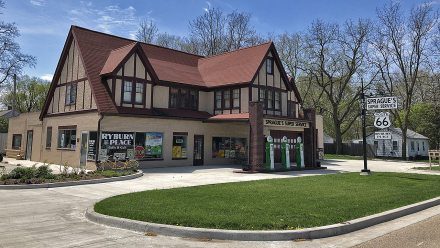
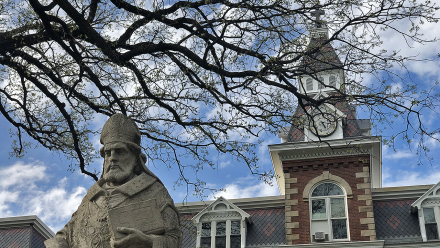

7 Replies to “2019: Illinois Marathon”